The best cross country skis: classic, skate and Nordic skis for exploring the snowy backcountry
The best cross country skis for heading off-piste to tour and explore the backcountry, or setting off to ski some groomed trails
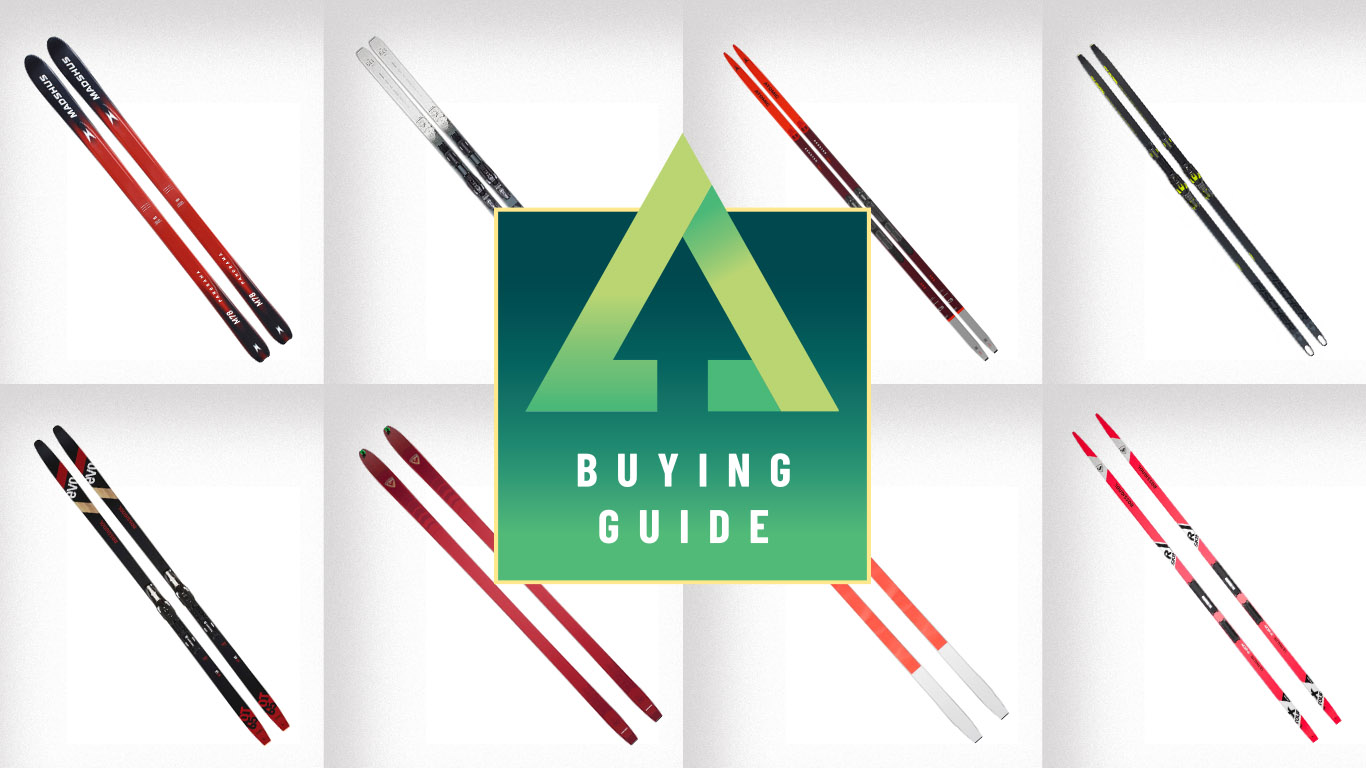
The most important thing about choosing the best cross country skis is knowing what you want to use them for. Because cross country skiing is a term that encompasses a wide range of snow-sliding activities, from kicking and gliding on waxed or waxless skinny skis on a groomed track, to skate skiing on groomed paths, exploring unmaintained trails and bushwhacking through the woods to carve powdery turns.
What all forms of cross country skiing have in common, though, is the way your boot attaches to your ski. Unlike with alpine skiing, where your toes and heels are locked onto the ski with an alpine binding, with cross country skiing your boots are attached to your ski at the toes only.
Scroll down to the bottom of this article for more details on the differences between classic, skate, and touring skis, or read on for our top recommendations.
The best cross country skis
You can trust Advnture
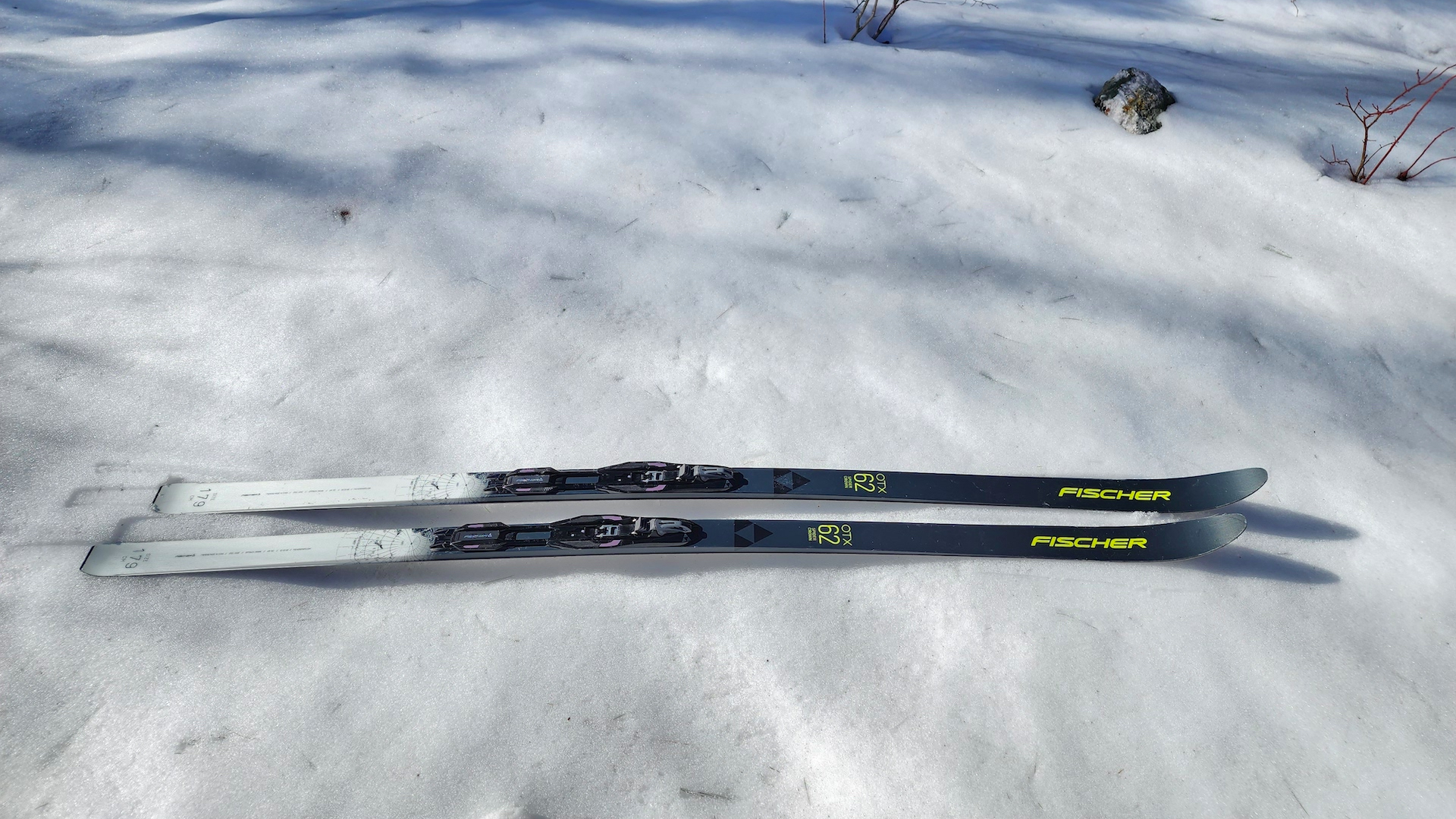
1. Fischer Spider 62 Crown Xtralite
Our expert review:
Specifications
Reasons to buy
Reasons to avoid
For skiers looking for one ski that does it all, there’s no better choice. A classic ski for use on or off-track, Fischer’s Spider 62 Crown Xtralite has full-length metal edges for turnability and control. It’s an ideal ski for mellow, untracked exploring. The ski’s air-channeled wood core makes the Spider 62 Crown Xtralite stable when you’re descending. It’s durable, so you can plan to get many years of use out of these skis, and the core combined with metal edges give grip and control whether you’re in the track or out.
These skis are made for beginner / intermediate skiers, but they’re fun to ski regardless of your experience. On test we found the underfoot waxless fish-scale pattern gripped on uphills without compromising glide on flats and downs. And when paired with a race boot, these skis were efficient in a groomed track.
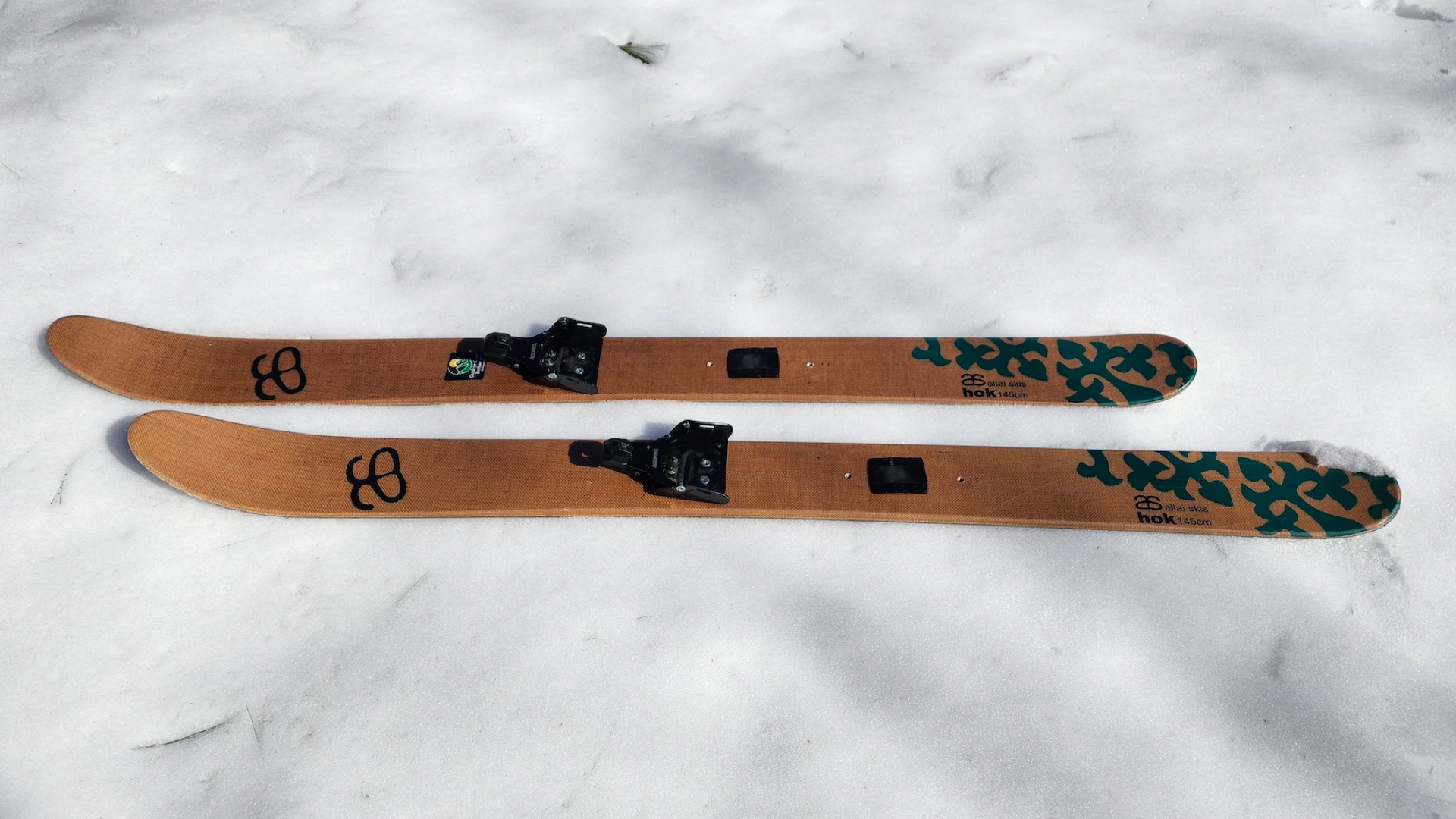
Specifications
Reasons to buy
Reasons to avoid
Wide, short, metal-edged skis with a permanent skin on the bottom, the Altai Hoks are made for finding your own adventure in the woods, meadows and anywhere else you want to go. Hok (pronounced hawk) is the word used for ski by the Tuwa people in the Altai Mountains.
They combine the turnability and float of a backcountry touring ski with the ease and convenience of a waxless Nordic ski. They can be mounted with either a universal binding that can be used with any winter boot, or with a 75mm three-pin binding for better performance.
An adapter plate makes these compatible with Rottefella NNN BC and Solomon BC bindings. Because of the width of the ski, it climbs better than most other waxless Nordic skis.
The Hok comes in three sizes: 125cm, 145cm, and a kids’ version – the Balla Hok – which is 99cm. The 145cm version is best for skiers who scout the woods for untracked downhills; it has the most float and glide. The 125cm version is more maneuverable (it’s practically a snowshoe substitute) and it’s easier to use with a light boot or universal binding.
Read our full Altai Hok review
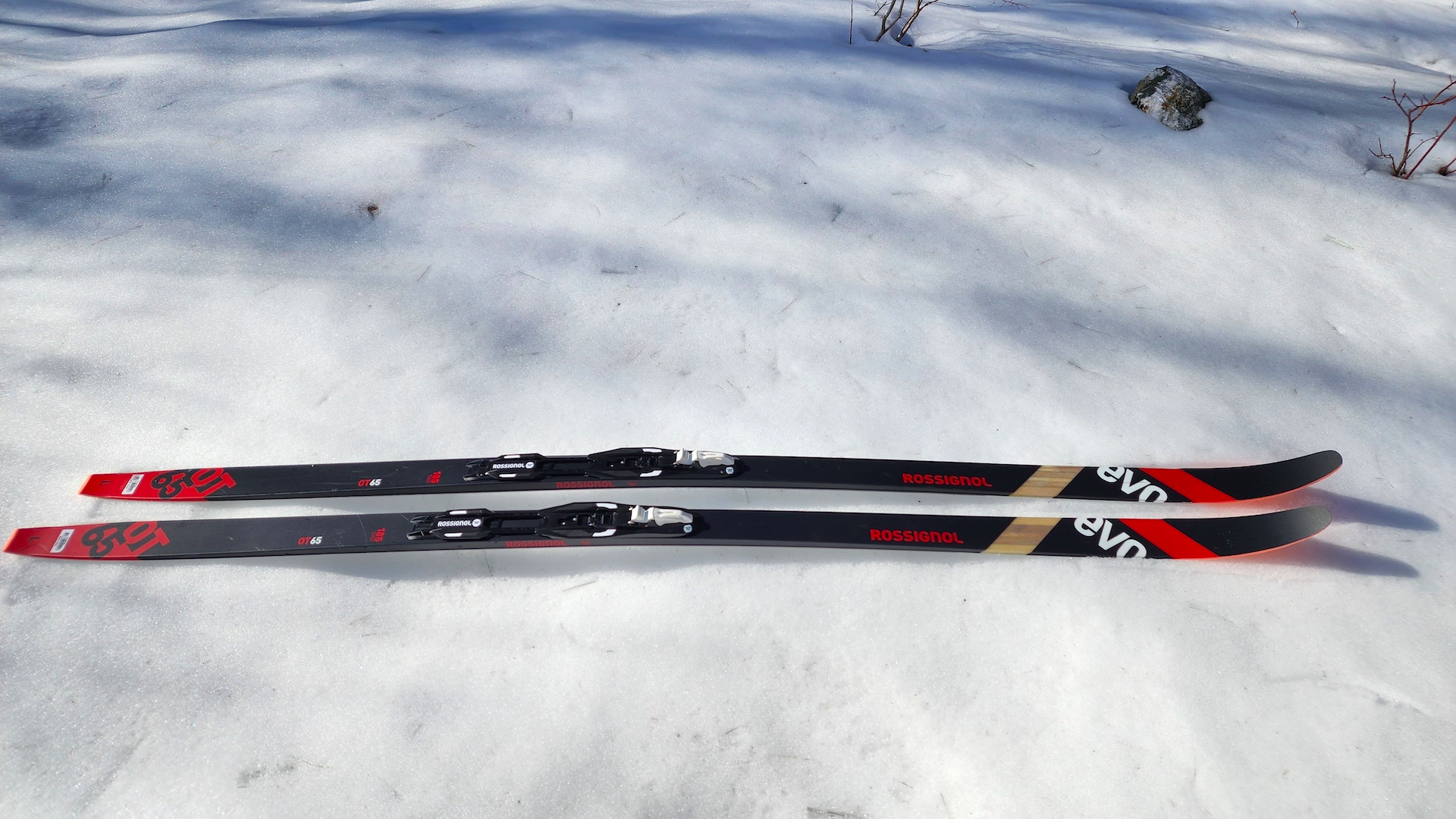
3. Rossignol OT 65 Positrack
Our expert review:
Specifications
Reasons to buy
Reasons to avoid
If you’re looking for one ski that’s fun in a lot of conditions; that you can wear to tow a sled into a backcountry hut; that you can zoom around your nearest groomed Nordic network on; and that won’t be overwhelmed by some backcountry adventures, then this is a great choice.
The Rossignol OT 65 bridges the gap between off-trail skiing and backcountry touring. Wide dimensions, sidecut and partial metal edges enhance this ski’s stability and edge control when you’re off-trail in natural snow. Rossignol built this ski shorter to make it more accessible to more skiers. And they gave it a lot of torsional rigidity and flex from tip to tail to give skiers confidence. It’s easy to turn and intuitive to maneuvre through glades and across powdery slopes. The ski incomes with a binding plate.
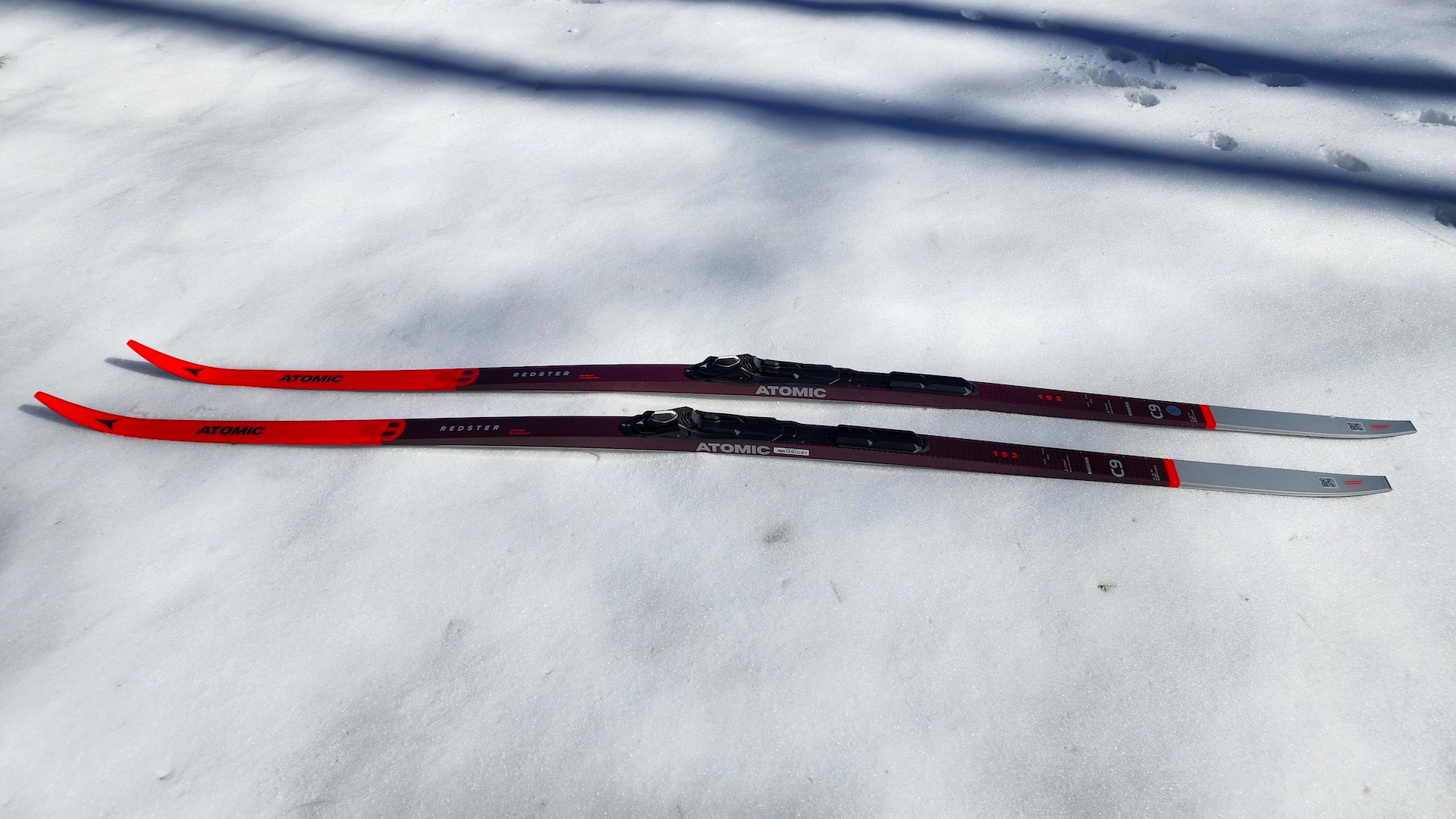
4. Atomic Redster C9 Carbon Skintec
Our expert review:
Specifications
Reasons to buy
Reasons to avoid
A light and stiff carbon fiber ski with a sidecut designed for speed, Atomic’s Redster C9 Carbon Skintec is the best cross countrry ski for racing and high-performance training. The ski uses a sintered World Cup base with a special additive for glide and mohair strips for grip. The combo creates a ski that’s lightning fast on snow.
The Redster C9 uses Atomic’s featherlight core reinforced with carbon fiber to give this ski exceptional power-to-weight. Sometimes carbon skis just feel stiff. This one feels energetic.
Snow temperature changes, and our expert tester loved that this ski’s Easy Skin Exchange allows you to change skins in seconds without tools – a feature that lets racers and high level skiers choose the right skin for the day minutes before heading out, with no waxing required. And the pure mohair strips gave best-in-class grip.
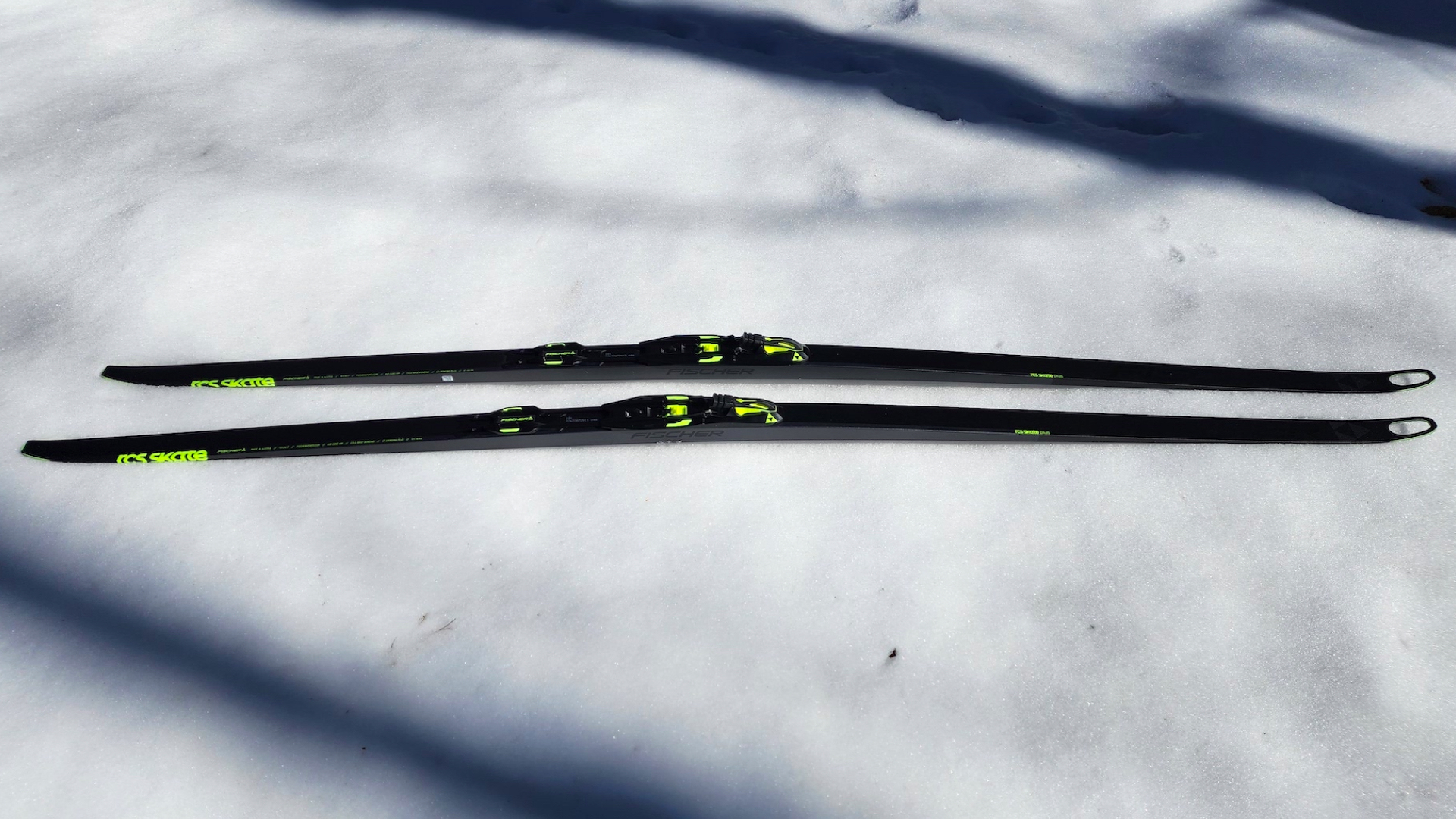
5. Fischer RCS Skate Plus
Our expert review:
Specifications
Reasons to buy
Reasons to avoid
This World Cup race ski was recently redesigned with a lower and shorter tip that reduces its swing weight to minimize the effort it takes to make each stride, making it easier to ski. Because, when you’re racing, every second and every bit of energy saving matters.
This is an ultralight, agile, stable ski (the core is 80% air) and it is Fischer’s top performer. It’s built with Cold Base Bonding, which optimizes the diamond ground ski base for the highest level of wax absorption in order to give this ski the best glide.
The core is wrapped with a torsion-free and break-resistant cap for durability. Then each handmade ski is computer-analyzed to make sure it closely matches its partner ski, and both skis are factory tuned to best match each other’s residual tension and camber pressure.
These skis come pre-waxed with an infrared preparation that protects the bases from oxidation, and gives them great glide and climbing ability.

6. Madshus Fjelltech M50 Skin Skis
Our expert review:
Specifications
Reasons to buy
Reasons to avoid
A lightweight classic touring ski for skiing in and out of the tracks, the Madshus Fjelltech M50 uses integrated mohair and nylon skins for grip and three-quarter-length steel edges for control. The 50mm waist ski is a fast cruiser on groomed Nordic tracks, but it’s also a fun ski to explore with. The ski now comes with a pre-installed binding plate for tool-free set up. The ski is built on a farmed Paulownia wood core wrapped in fiberglass and carbon fiber that help the ski feel more stable.
On test we found that this ski glided as well as it gripped, and because it's narrow, you can move fast through the wintery landscape. But, when it’s icy, we would have liked full metal edges for more stopping power on downhills.
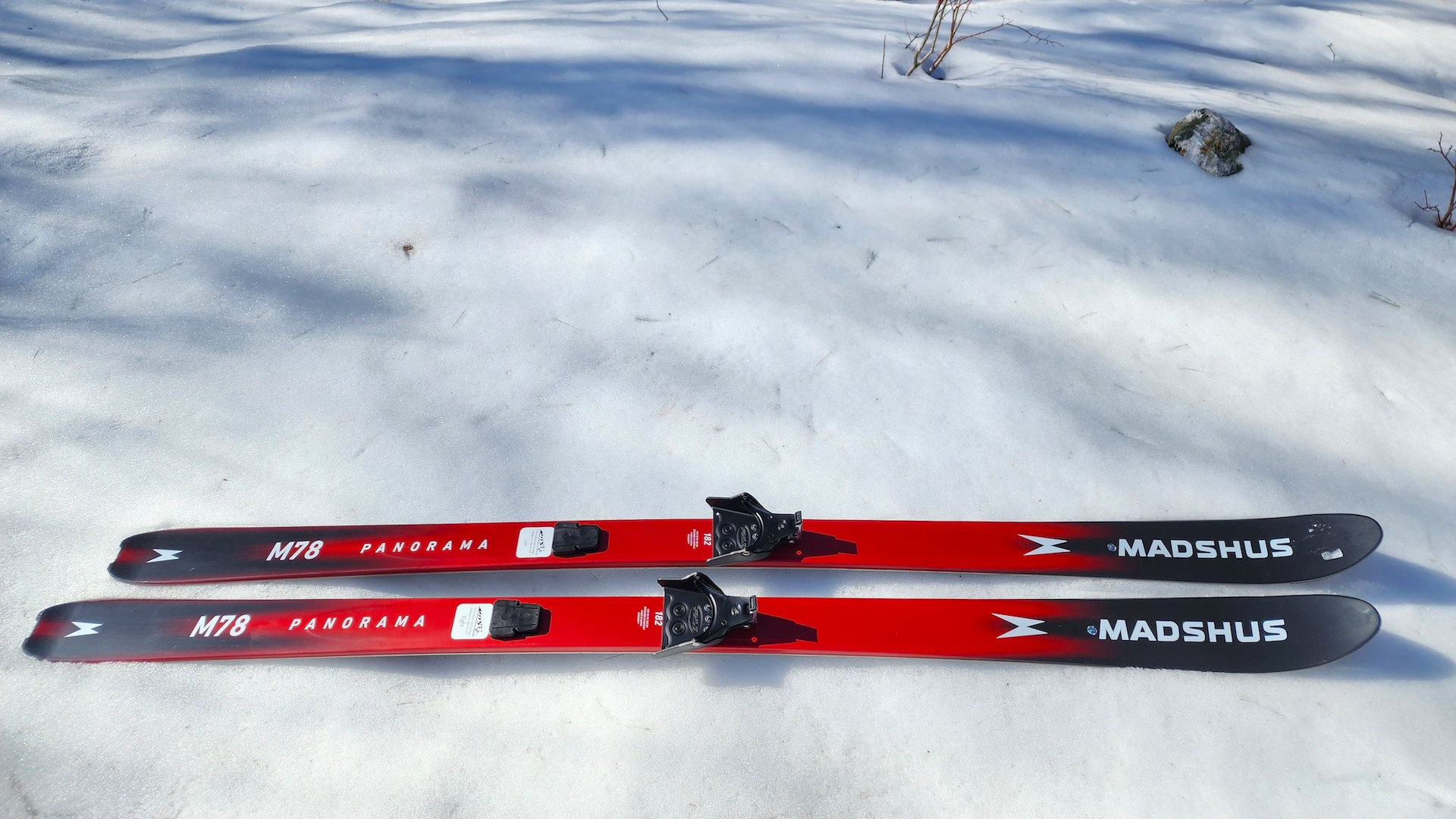
7. Madshus Panorama M78
Our expert review:
Specifications
Reasons to buy
Reasons to avoid
A ski for exploring in snow from hardpacked to deep, the Madshus Panorama M78is a ticket to backcountry fun, letting you carve powdery turns in mellow terrain.
A wider tip, which is also called the shovel, helps this ski stay afloat in deeper snow. It’s well suited to a three-pin binding and a more robust boot for maximum maneuverability in variable terrain. The fischscale waxless base gives this ski confidence-inspiring grip on flats and climbs while the progressive sidecut facilitates carving on descents.
Full-length steel edges provide control. Don’t expect this ski to give you the carvability and control of an alpine touring skis, but do use it for local adventures, and scouting new lines. It’s poppy and playful thanks to the interlocking strands of fiberglass and carbon fiber that wrap the ski’s core. That’s also what gives this ski stability and strength while keeping it light and lively, and makes it the best cross country ski for multi-day adventures.
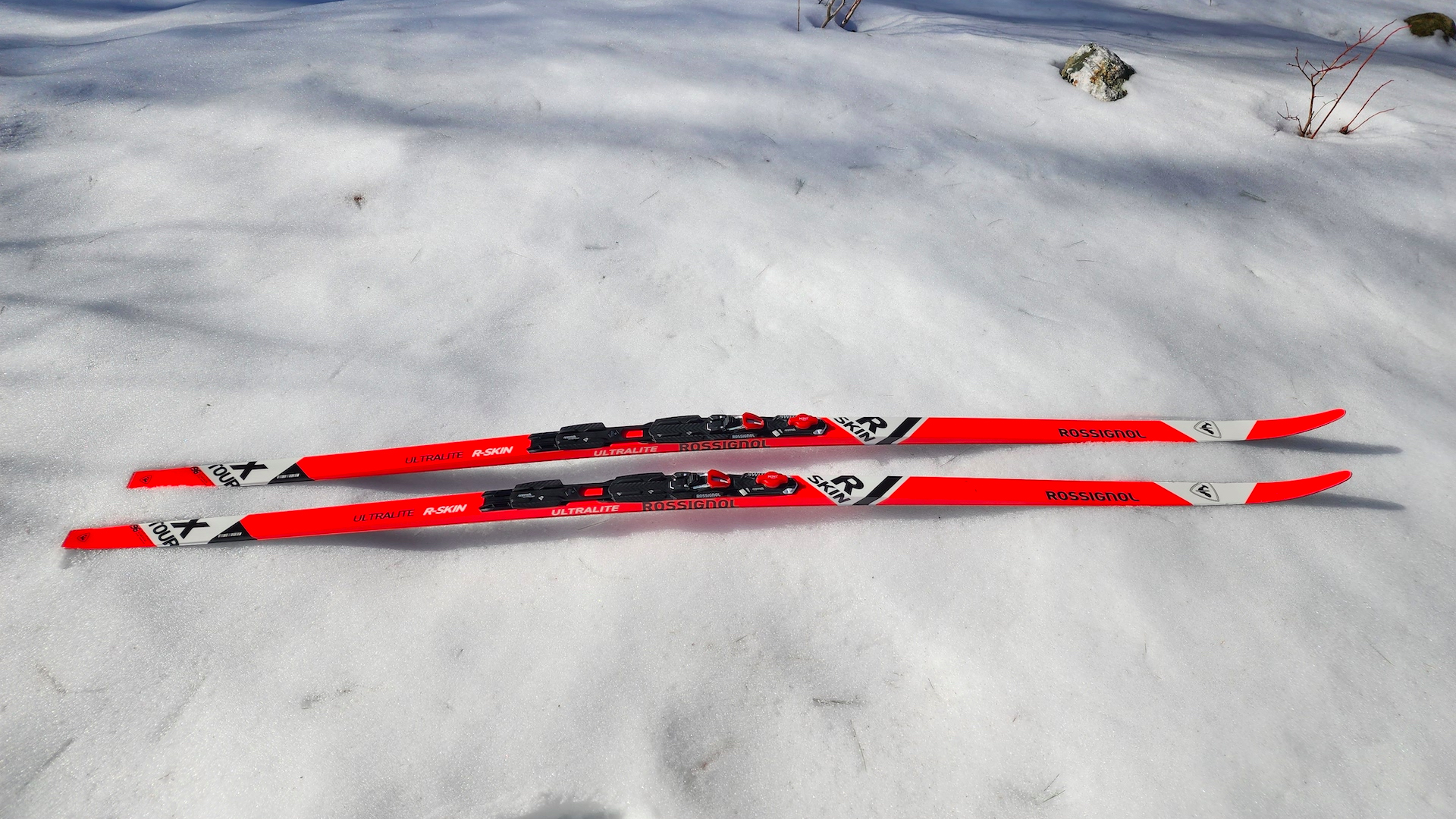
8. Rossignol R-Skin Ultra
Our expert review:
Specifications
Reasons to buy
Reasons to avoid
Made for fitness skiers and for training, Rossignol’s R-Skin Ultra is an agile classic ski for kicking and gliding in all conditions, no waxing required.
Built-in mohair inserts give this ski grip to propel you forward. And it comes with a pre-installed binding plate that lets the ski flex naturally for the best experience on snow.
Rossignol’s R-Skin Ultra has superb snow feel, excellent precision and good glide. It also has a low barrier to entry. Whether you’re an athletic person looking for a new cardio activity, or a skier who wants to hit the trails without having to prep your skis, this ski delivers.
Skis | Price | Weight (per pair) | Base | Edges | Sidecut (in mm) | Sizes (in cm) |
Fischer Spider 62 Crown Xtralite | $279 (US) / £185 (UK) / €219.00 (EU) | 3,320g / 7lb 5.11oz | Sintec / Offtrack crown waxless pattern | Full metal | 62 / 52 / 60 | 169, 179, 189, 199 |
Altai Hok | $250 (US) | 2,380g / 5lb 3.9oz | Permanent skin over a standard ski base | Full metal | 124 / 110 / 122 | 99 (kids), 125, 145 |
Rossignol OT 65 Positrack | $299.95 (US) / £200 (UK) | 1,800g / 3lb 15.5oz | Positrack | Partial metal edge | 65 / 53 / 60 | 165, 175, 185, 195 |
Atomic Redster C9 Carbon Skintec | $940 (US) / £630 (UK) | 1,120g / 2lb 7.5oz | BI 6000, WC Grinding with mohair skin | n/a | 43 / 44 / 44 | 187, 192, 197, 202, 207 |
Fischer RCS Skate Plus | $550 (US) / £288 (UK) | 1,090g / 2lb 6.5oz | World Cup Plus | n/a | 41 / 44 / 44 | 171, 176, 181, 186, 191 |
Madshus Fjelltech M50 Skin Skis | $270 (US) / £300 (UK) | 1,780g / 3lb 14.8oz | Intelligrip integrated skin | Three-quarter-length metal | 60 / 50 / 55 | 177, 187, 192, 202 |
Madshus Panorama M78 | $335 (US) / £287 (UK) | 2,530g / 5lb 9.2oz | Omnitrack waxless base | Full metal | 109 / 78 / 95 | 162, 172, 182, 192 |
Rossignol R-Skin Ultra | $289.95 (US) / £286 (UK) | 1,380g / 3lb 1oz | Waxless R-SKIN | n/a | 48 / 44 / 46 | 176, 181, 186, 191, 196, 201 |
How we tested the best cross country skis
All of the cross country and Nordic skis featured here have been extensively tested by our highly experienced winter gear reviewer, who put them through their paces on both groomed and ungroomed terrain in the great white hills of North America and Norway, the home of Nordic skiing. Each set of skis was then assessed against a set of criteria ranging from the comfort of the bindings to the performance quality of the skis themselves.
For more details, see how Advnture tests products.
Classic, skate, and touring skis
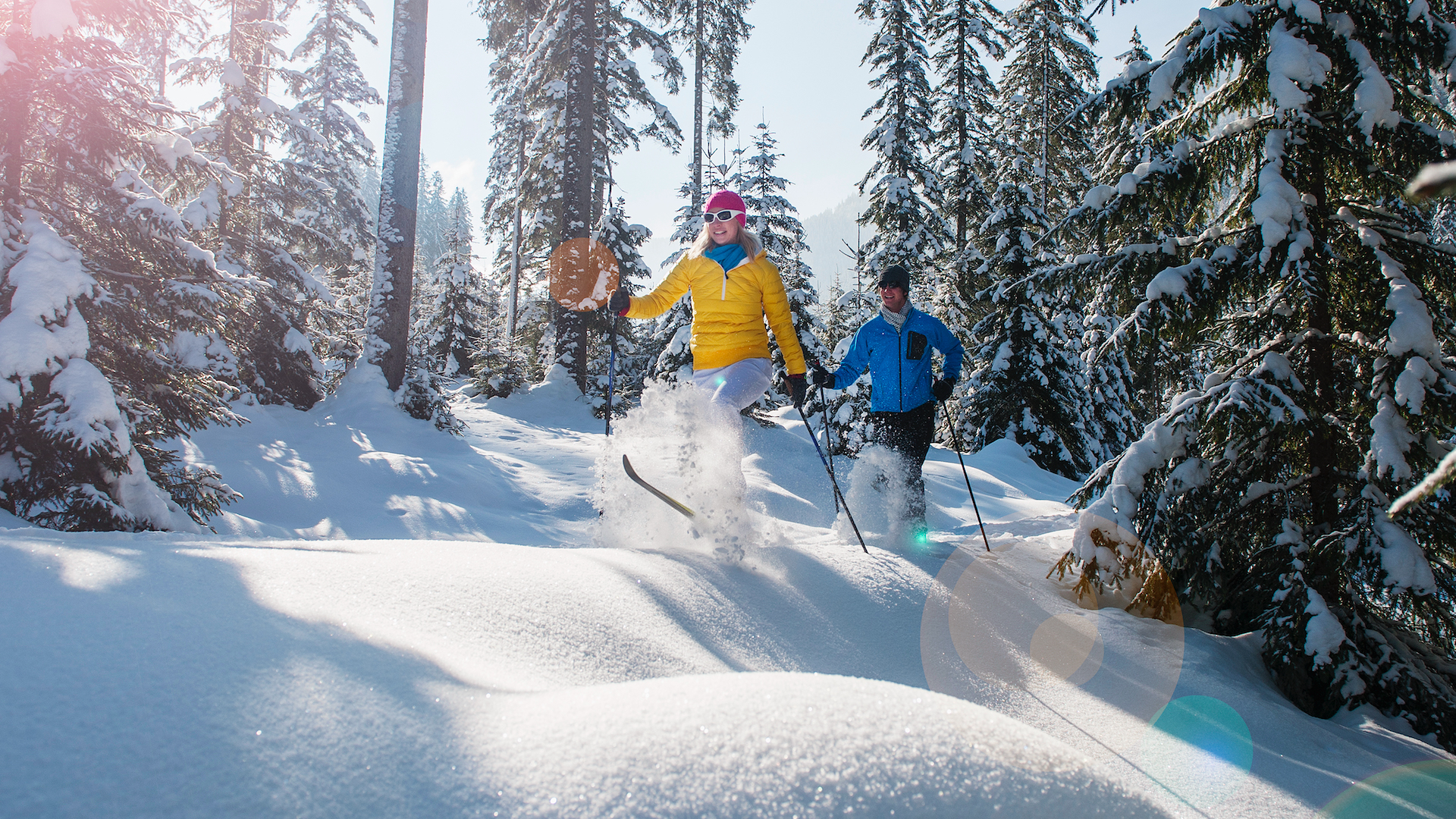
Most cross country skis are narrow. A lot of cross country skiing is done on groomed tracks in Nordic skiing areas. Classic skis, used to stride forward by kicking and gliding, are typically 68mm or narrower, and that’s the width of most groomed skis tracks. Classic skis have minimal sidecut to help you track and glide straight, which is to say that the front, back and middle of the ski are all about the same width. Classic skis most often have a waxless, waxable or mohair base.
Skate skis, made for gliding along the snow using the same motion as ice skating, are typically light and often between 41mm and 45mm wide. Like classic skis designed to be used in a groomed track, they have little sidecut.
Some classic skis have metal edges for control outside the track, and a wider profile with more pronounced sidecut. Those skis are made for use in ungroomed snow. If you want a ski for use both with and without groomed tracks, buy some that are 68mm or narrower. If you want skis for touring, exploring and point-to-point off-piste skiing, opt for wider skis with metal edges and more sidecut, which facilitates turning.
Race skis are narrower than those intended for recreational skiing, because the less amount of ski you have making contact with the snow, the faster you will go. Many race skis are under 60mm, and most have ultralight construction, often using carbon fiber and extremely light materials in the core.
Choosing the best cross country skis for you
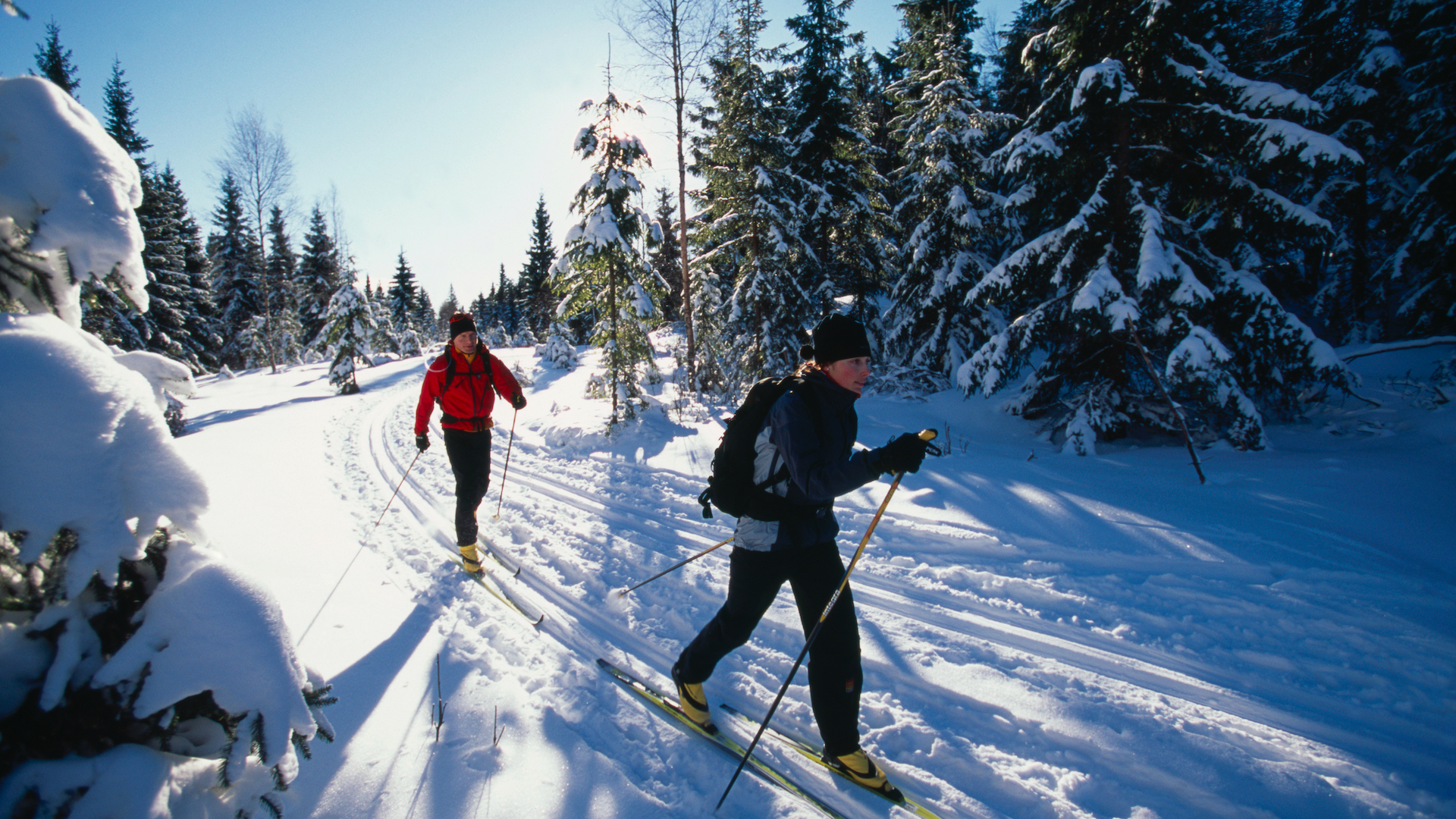
As we have seen, cross country skis come in many shapes and sizes. The best cross country skis for you are the ones that most suit your preferred form of cross country skiing, whether that’s skate style, classic skiing on groomed trails or point-to-point touring and exploring in the backcountry. Beyond that, the following factors are also important considerations.
Traction
Some cross country skis use a waxless base with and in-molded fish scale or similar patterns that bite into the snow for traction on climbs. Skate skis and waxable classic skis grip the snow with wax that’s optimized for the day’s snow temperatures. Classic race skis either have a waxable base or mohair straps for traction. The mohair strips work like “skins” on backcountry touring skis. The hairs glide forward then stick into the snow to prevent you from siding backwards.
Length
Buy skis based on your weight and ability. Longer skis will glide more quickly, and they’re better for more experiences skiers; shorter skis are easier to control, and more maneuverable in tight terrain, like trees.
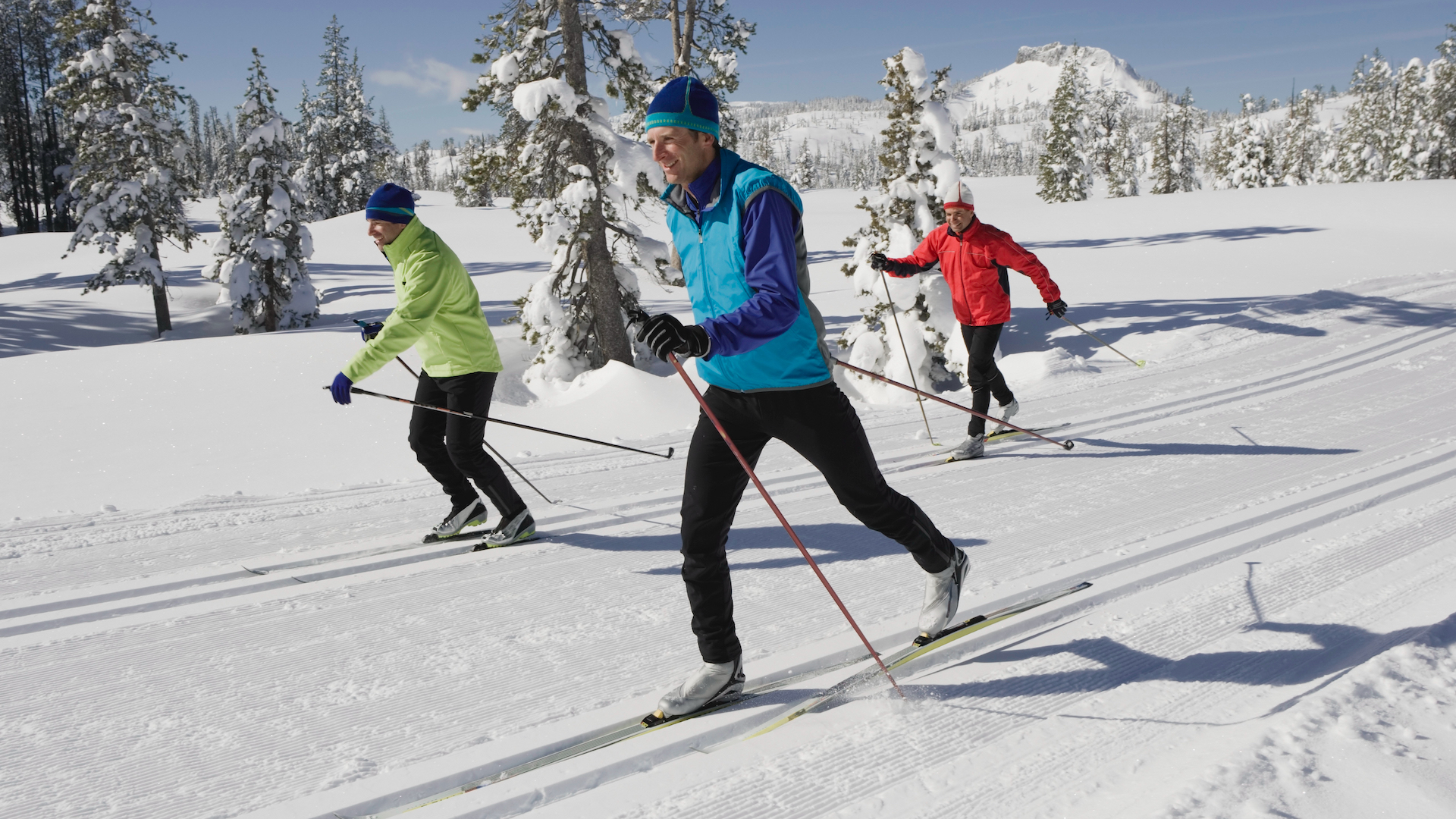
Width and edging
Wider skis will be more stable. Metal edges assist with stopping, and can also help with carving turns. Consider a wider cross country ski with metal edges if you’re likely to be venturing beyond the groomed tracks.
Wax
Waxless skis are good for grab-and-go adventures, while waxed skis require some thought and knowledge, as you need to apply the right wax to match the temperature of the snow (it’s a fine art).
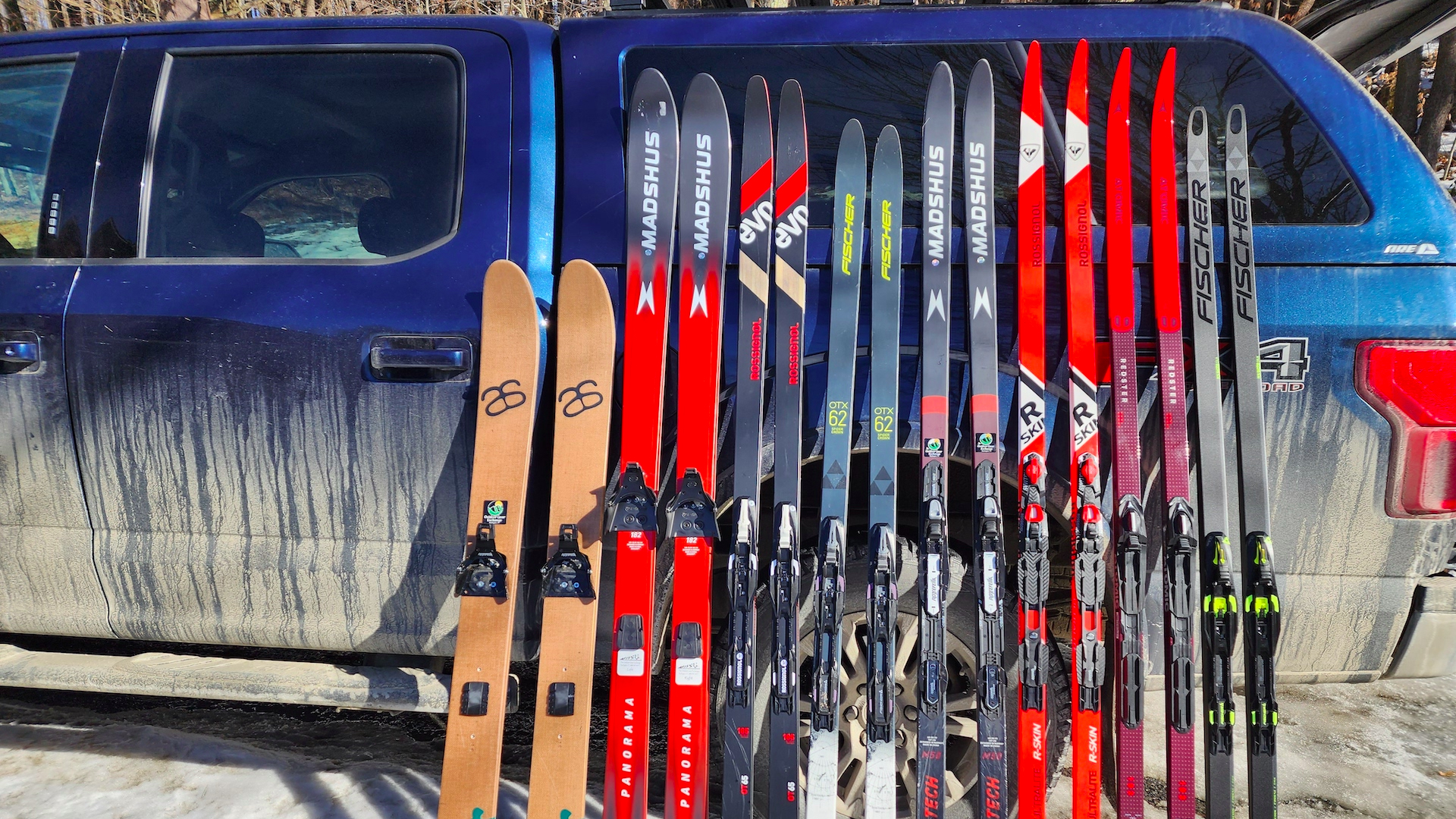
More skis = more fun
If you don’t want to have to choose between skiing groomed or ungroomed terrain, there are skis available that are fun in tracks as well as being a blast in the woods. Alternatively, if you get out on the white stuff regularly, there is a compelling argument for having multiple pairs of skis, so you always have the right tool for the job and the day’s conditions.
What to do with your old skis
Tossing your old skis into landfill would be a real shame. If they're still in decent condition, you could donate or sell them, and maybe recoup a little of the cost of your replacements.
If your skis are no longer snow-worthy, there's a surprising number of companies that will accept them for upcycling into funky furniture, such as Green Mountain Ski Furniture in Vermont, and SkiChair in Massachusetts. Try searching for ski upcycling projects in your area to see what's available.
- The best men’s ski pants: leg protection for skiing and boarding
All the latest inspiration, tips and guides to help you plan your next Advnture!
Vermont-based writer, photographer and adventurer, Berne reports on hiking, biking, skiing, overlanding, travel, climbing and kayaking for category-leading publications in the U.S., Europe and beyond. In the field, she’s been asked to deliver a herd of llamas to a Bolivian mountaintop corral, had first fat-biking descents in Alaska, helped establish East Greenland’s first sport climbing and biked the length of Jordan. She’s worked to help brands clean up their materials and manufacturing, and has had guns pulled on her in at least three continents.

